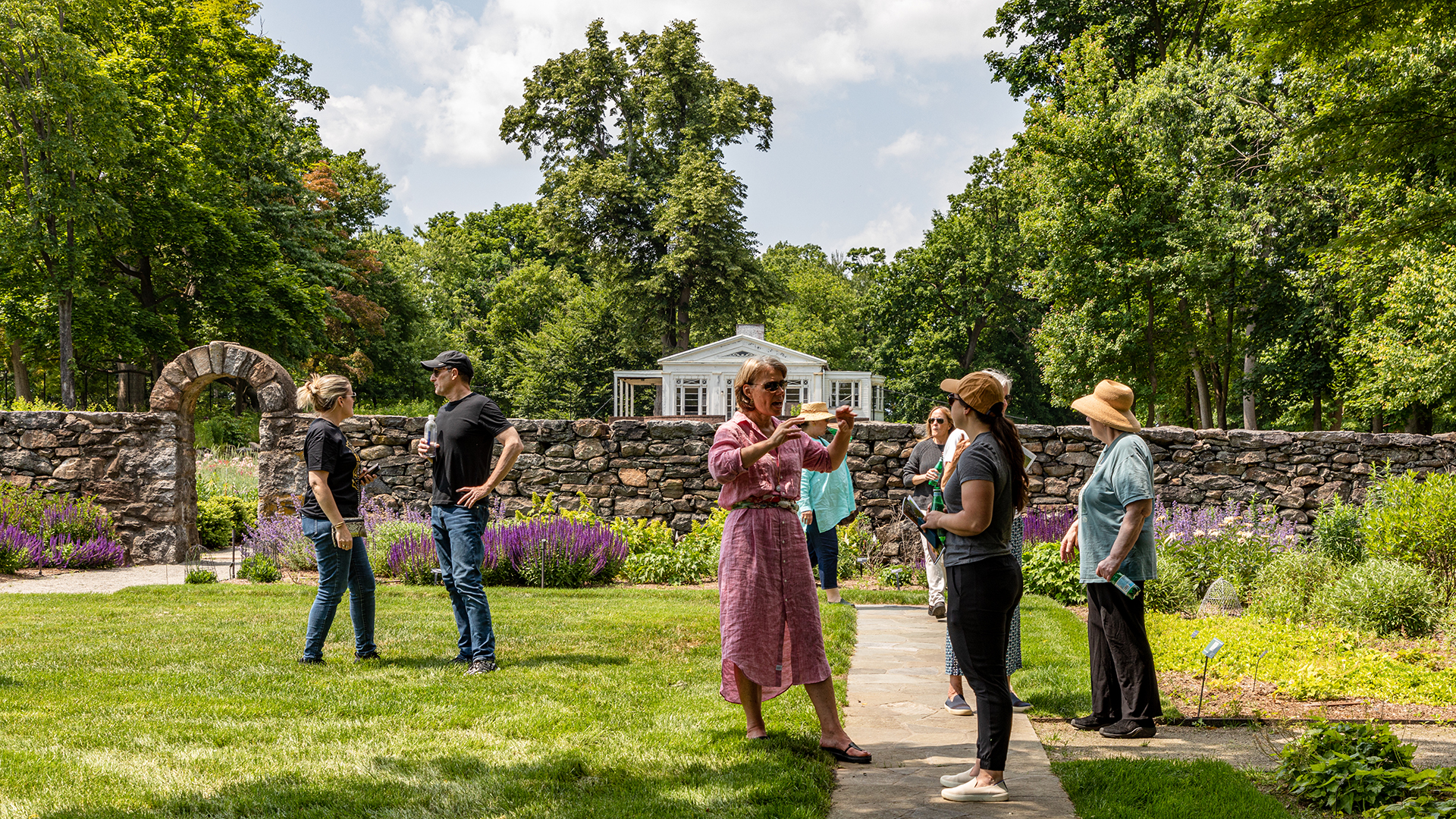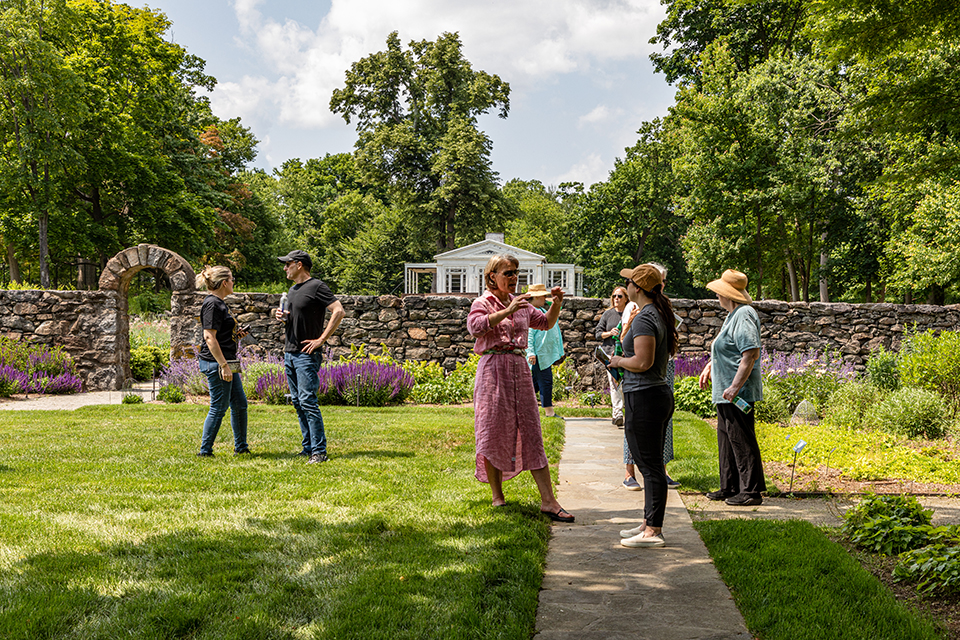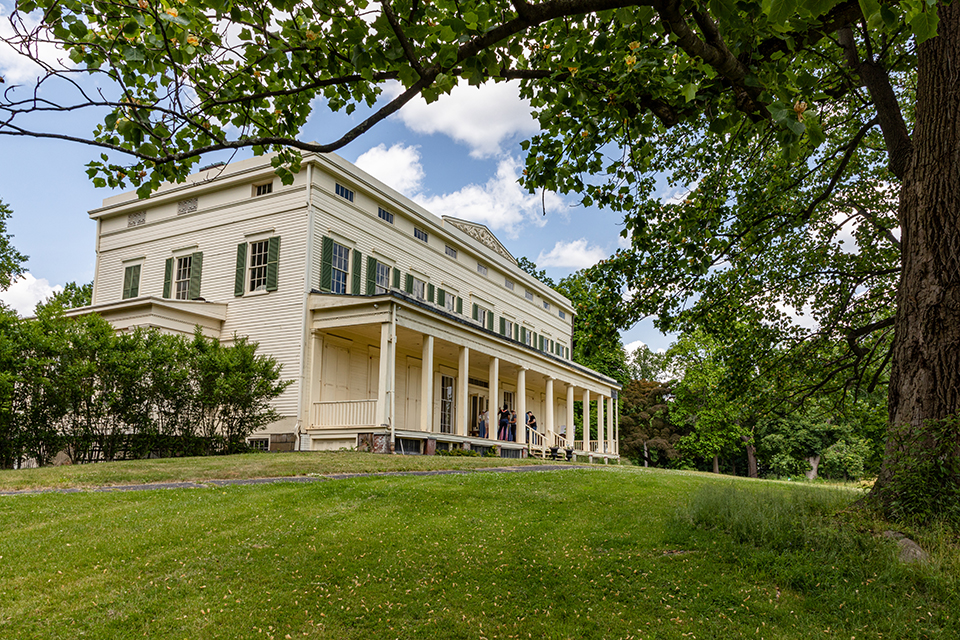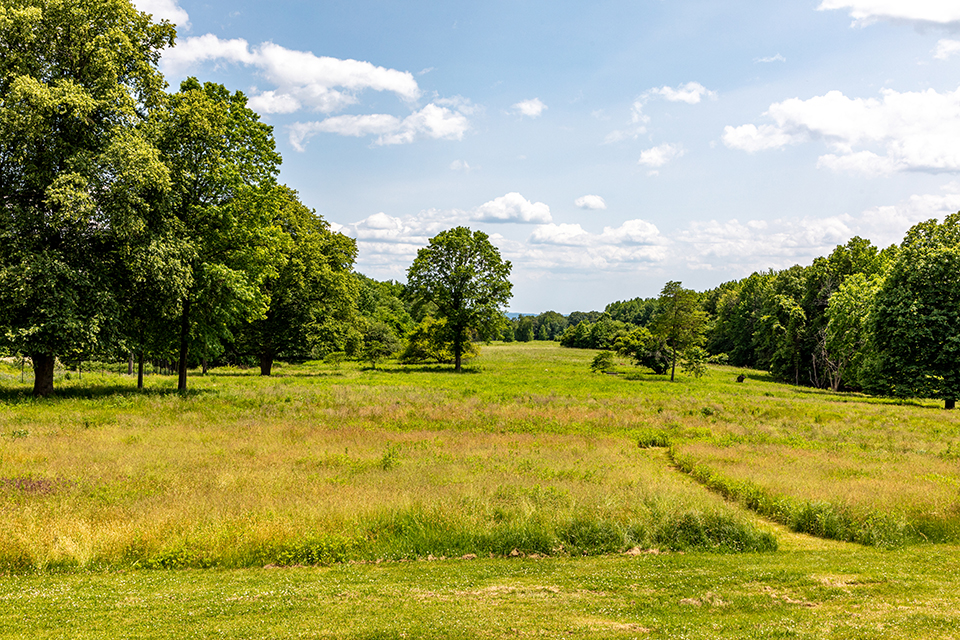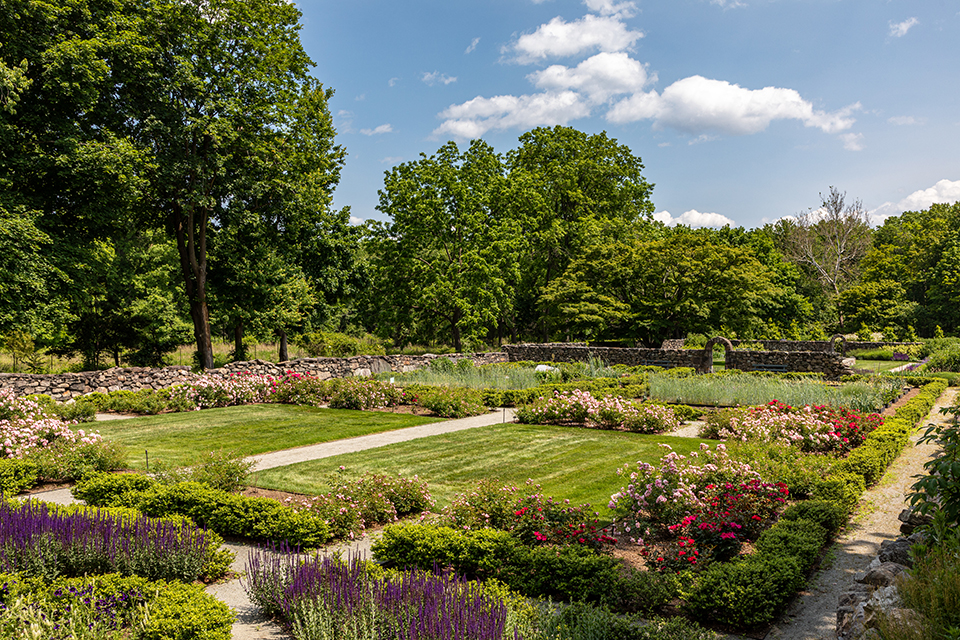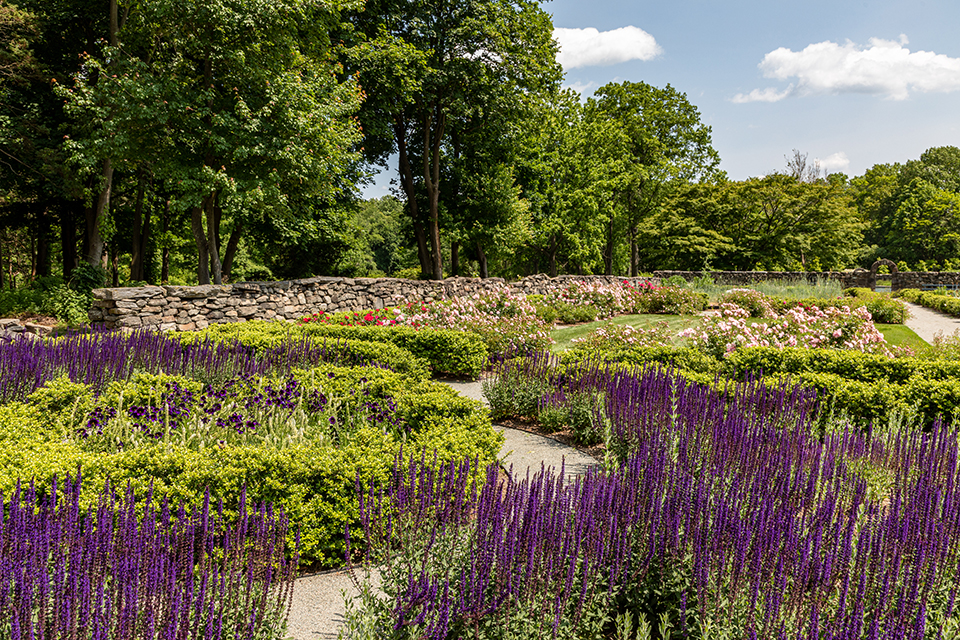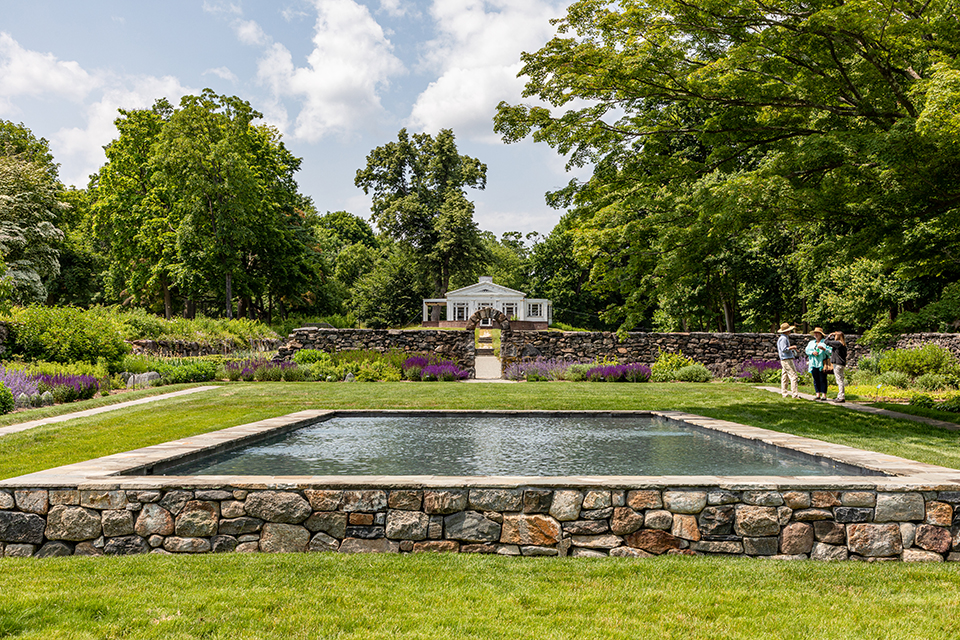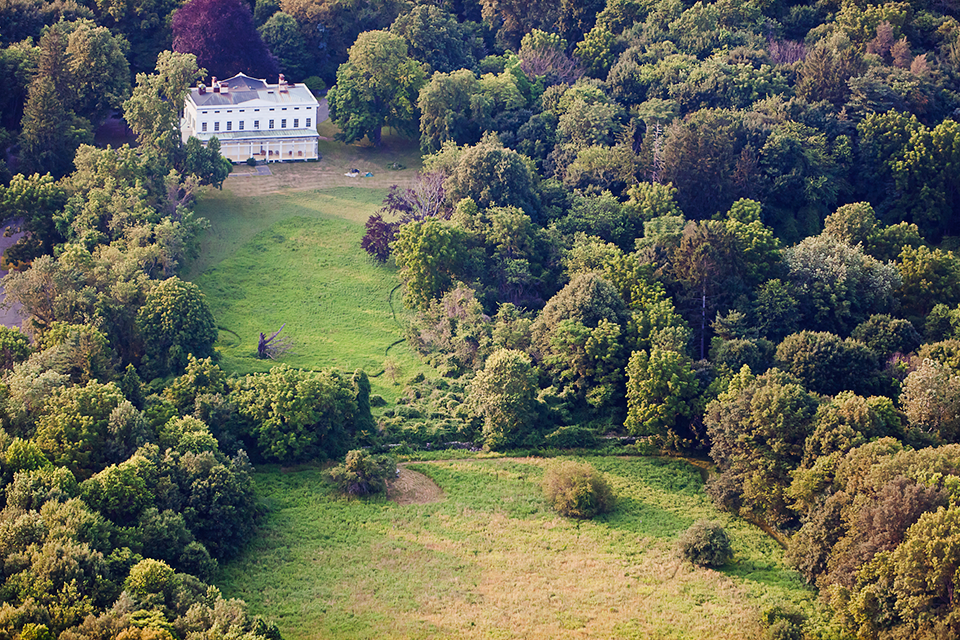In 1745 Peter Jay, a successful merchant and horticulturalist, purchased 250 acres in Rye, New York, with the hopes that a move to the country would safeguard the lives and health of his family from a recent outbreak of smallpox in Manhattan. “The Locusts,” bounded by the Kings Highway (Route 1) and the Long Island Sound, became the family home of John Jay, one of the seven Founding Fathers of our nation, and to successive generations of this family, including landscape architect Mary Rutherfurd Jay.
Background
Under the family’s care the estate grew to 400 acres, including pastures for livestock, a family cemetery lined with cypresses, bountiful gardens and orchards, and a veritable arboretum of trees including elms, oaks, and horse chestnuts. A member of England’s Royal Horticultural Society, John Jay regularly sent seeds home from Europe and, together with his son Peter Augustus, installed stone ha-has in 1822 to control livestock and safeguard the property’s prominent feature, an open meadow stretching to the Sound since Paleo-Indian settlement of the site (which is believed to be the oldest human-managed meadow on record in New York State).
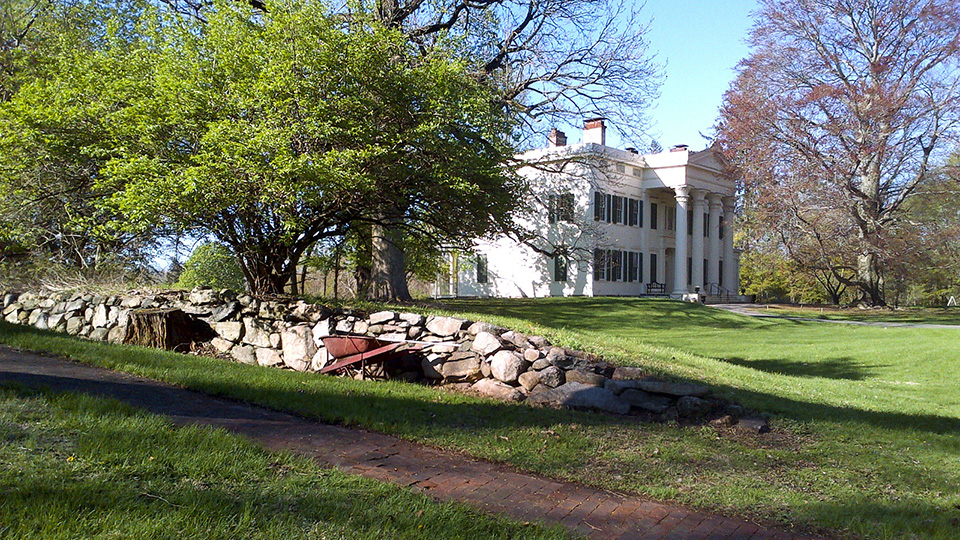 Jay Estate, Rye, N.Y., 2014. Photo by Alex MacLean, courtesy The Cultural Landscape Foundation.
Jay Estate, Rye, N.Y., 2014. Photo by Alex MacLean, courtesy The Cultural Landscape Foundation.
During the mid-nineteenth century Peter Augustus turned the gentleman’s farm into a country estate, replacing the farmhouse with a Greek Revival mansion, installing boxwood gardens and ponds, and engaging architect A. J. Davis to design a Gothic boathouse on a hill facing the Sound. In 1905 the property was sold to Dutch financier Warner La Montaigne van Norden, who formalized the garden rooms while retaining the grazing fields and the existing axis to the Sound. Edgar Palmer purchased the estate in 1911 and hired Brinley & Holbrook to expand the grounds, including construction of another residence.
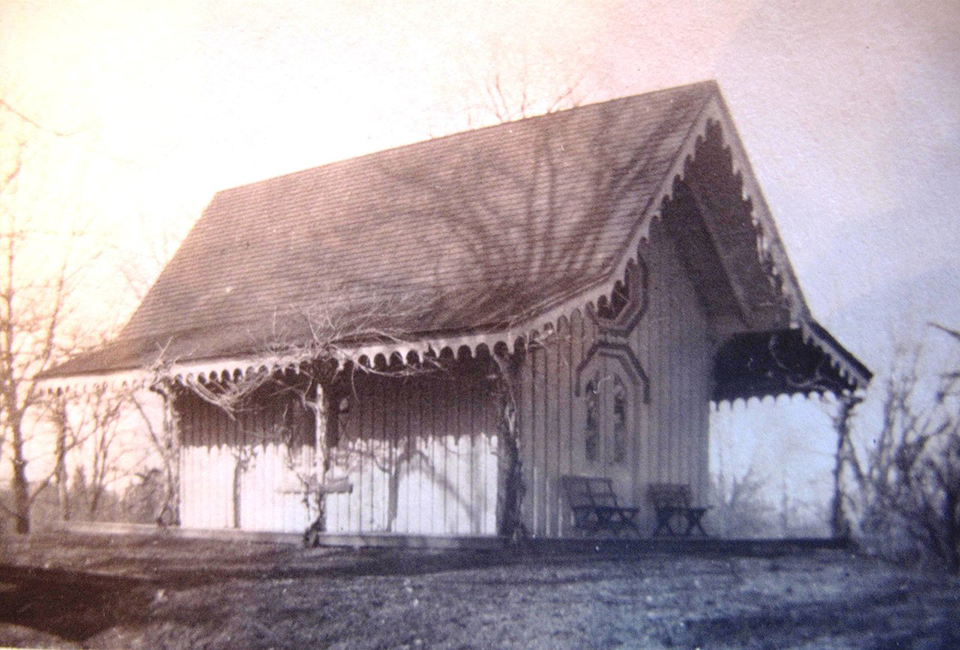 Gothic Boathouse, Jay Estate, Rye, NY. Image courtesy Wikimedia Commons.
Gothic Boathouse, Jay Estate, Rye, NY. Image courtesy Wikimedia Commons.
Private ownership and careful stewardship of the Jay Estate ended in 1979 when a local developer threatened to build more than thirty condominiums on the property. During the course of litigation and a thirteen-year-long grassroots effort to save the cultural landscape and its buildings, specimen trees were removed, unclean fill materials were brought in, and invasive plants flourished, nearly making the property unsafe. The estate was eventually rescued by a coalition of 62 historic and environmental organizations, including the five founding women of the Jay Coalition (today’s Jay Heritage Center). These advocates persuaded Westchester County and New York State to take action to purchase and thereby protect the Jay Property in perpetuity.
Twenty-three acres of the original estate, including the meadow, remains today. The property was listed in the National Register of Historic Places in 1982 and designated a National Historic Landmark (NHL) in 1993. In 2004 it was added to Westchester County’s African American Heritage Trail. Also that year, the firm Heritage Landscapes created a comprehensive Cultural Landscape Report (CLR) detailing the known history of the Jay Property and making treatment recommendations for the NHL as a vibrant educational center. In 2009 it was unanimously voted into the Hudson River Valley National Heritage Area.
Despite its designations, a wealth of supporting documents provided by the Jay, Van Norden, and Palmer descendants, as well as years of fundraising, research, and planning efforts undertaken by the Jay Heritage Center (JHC) that resulted in a CLR, the landscape deteriorated dramatically as a result of a deferred maintenance aimed at erasing significant traces of its historic design intent. The three-quarter-mile meadow and viewshed to the Sound was at risk of vanishing through neglect and the unbridled growth of invasive species was accommodated by local and state government officials, whose management philosophy could best be described as “letting nature take its course.” In May 2010, after decades of unsuccessful appeals by the JHC and its supporters to halt destructive maintenance and management practices, the JHC filed a Notice of Claim against Westchester County, demanding that the County redress extensive damage to the historic site over a nearly two-decade period.
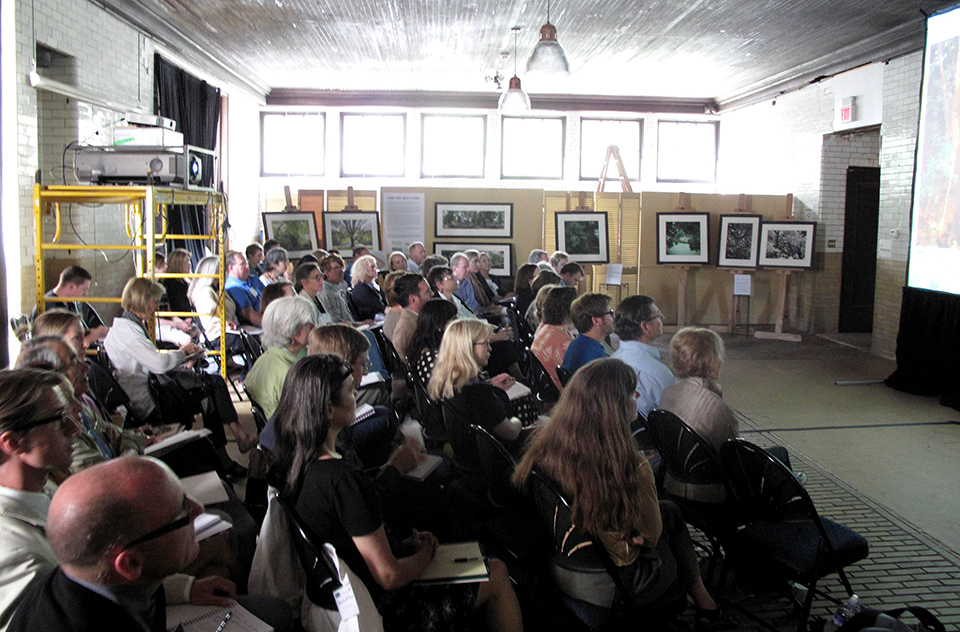
Bridging the Nature-Culture Divide Symposium, Jay Estate, Rye, NY, 2011. Photo courtesy of Suzanne Clary.
Advocacy and Engagement
TCLF was the first national organization to recognize the Jay Estate’s precarious state, enrolling it in its Landslide program of at-risk landscapes on June 9, 2010, warning that without rapid intervention, its “living and non-living character-defining features and materials will be lost forever.” On June 4, 2011, TCLF and JHC co-hosted a national, one-day symposium featuring six leading figures in landscape architecture and environmental design, each with substantive experience working with nationally significant historic sites, to examine how cultural landscape stewardship could balance competing agendas for ecology and history, and the role of design in this nature-culture divide. The symposium organizers aimed to provoke discussion, push boundaries, and inspire solutions. Among the nearly 70 attendees were historic site directors, several local teachers, and an array of landscape architects and allied professionals from around the country.
In 2012, the future of the Jay Estate improved considerably when a public-private partnership formed to assume responsibility for the restoration and long-term management of the property. As part of the agreement, the JHC overtook stewardship of the landscape, with plans to transform the park into a premier educational and heritage-tourism destination. The JHC raised more than $1.3 million to help reclaim underutilized green spaces for public use. During this time TCLF continued to raise awareness and support. In 2013, for example, TCLF keynoted the event, “Seeds of Rye,” with an audience that included delegates from 22 New York State chapters of the Garden Club of America (GCA). The lecture was followed by a site walk that included a private tour of two of three stone-walled garden spaces slated for future rehabilitation and community use. Following the approval of the public-private partnership agreement, the JHC was awarded a $500,000 grant in 2014 from New York State’s Regional Economic Development Council to fund restoration of the gardens.
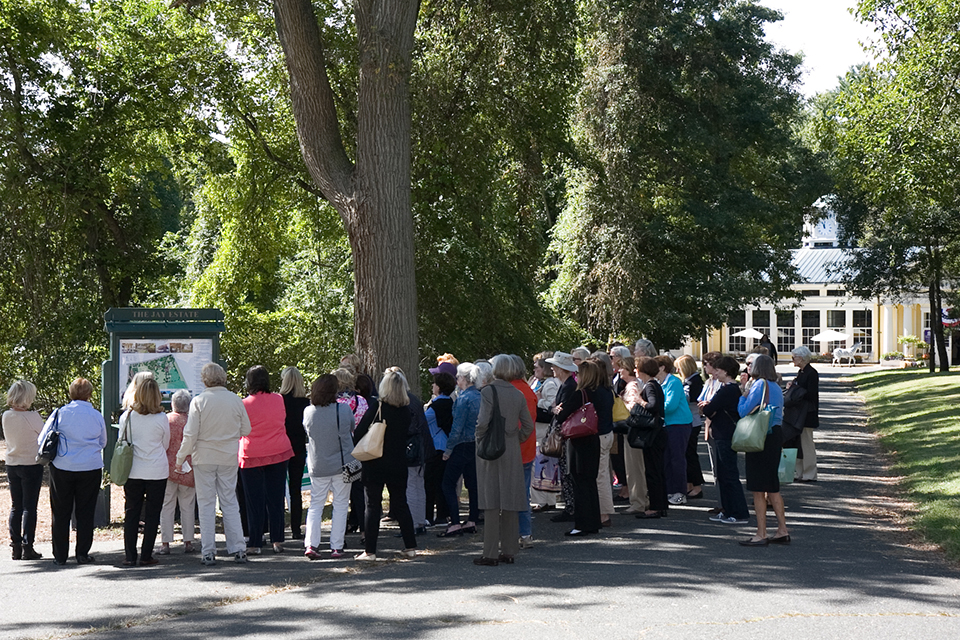 Seeds of Rye, Jay Estate, Rye, NY, 2013. Image courtesy of The Cultural Landscape Foundation.
Seeds of Rye, Jay Estate, Rye, NY, 2013. Image courtesy of The Cultural Landscape Foundation.
Landscape architects Nelson Byrd Woltz (NBW) designed and oversaw the rehabilitation with a plan that underscored the cultural history of this site. The project, which broke ground in Summer 2020, illuminates the lives of the estate’s varied inhabitants, including enslaved and freed women and men of African descent known to have lived, worked, and been buried at the Jay property. Biodiversity was bolstered by replacing invasive species like mugwort, Japanese knotweed, and porcelain berry with beneficial native shrubs and plants like red twig dogwood, arrowwood viburnum and American pillar rose, to name just a few. The project also included extensive archaeological excavations. Bits of Paleo-Indian pottery, historic ash paths, animal bones, cisterns, and even the foundation and chimney of a colonial-era dwelling were unearthed and reveal some aspects of life at the site from the seventeenth to the twentieth centuries. TCLF’s continuing partnership with the JHC continued in 2023 with a curated Garden Dialogue that created a public forum with the landscape architects and the historic property managers making visible the planning and design efforts that were foundational to the completed project work.
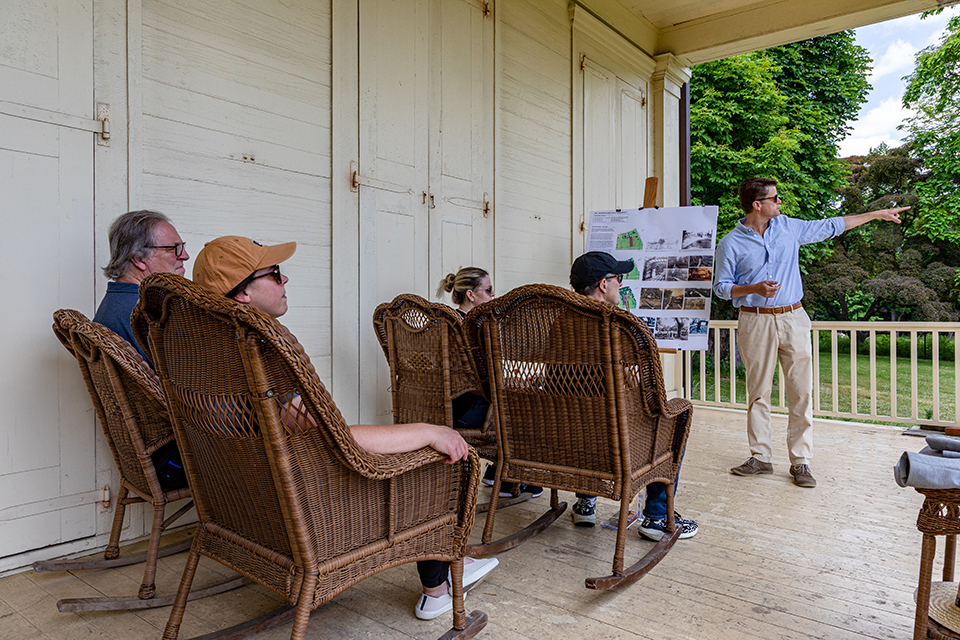 Garden Dialogue with Nelson Byrd Woltz (NBW), Jay Estate, Rye, NY, 2023. Photo © Barrett Doherty, courtesy The Cultural Landscape Foundation .
Garden Dialogue with Nelson Byrd Woltz (NBW), Jay Estate, Rye, NY, 2023. Photo © Barrett Doherty, courtesy The Cultural Landscape Foundation .
Looking ahead, the JHC received a gift of $1.5 million in 2022 to open the Sue and Edgar Wachenheim III Exhibit and Performance Center, an arts and performance venue.
What began as dogged volunteerism and advocacy to save and rescue this historic property has blossomed into not just a revitalization of the cultural landscape and structures, but a hive of activity for diverse public engagement that is billed as “23 acres full of activities for every age.” In September 2023 New York State Parks and Westchester County Parks unanimously approved the renewal of JHC’s stewardship of the property for another ten-year period, affirming the success of this public-private partnership.
Selected Resources
“Public-Private Partnership Brings New Hope to the Jay Estate,” October 3, 2012
“More Good News for the Historic Jay Estate,” August 14, 2015
“Historic Jay Estate Breaks Ground on Garden Rehabilitation,” September 10, 2020
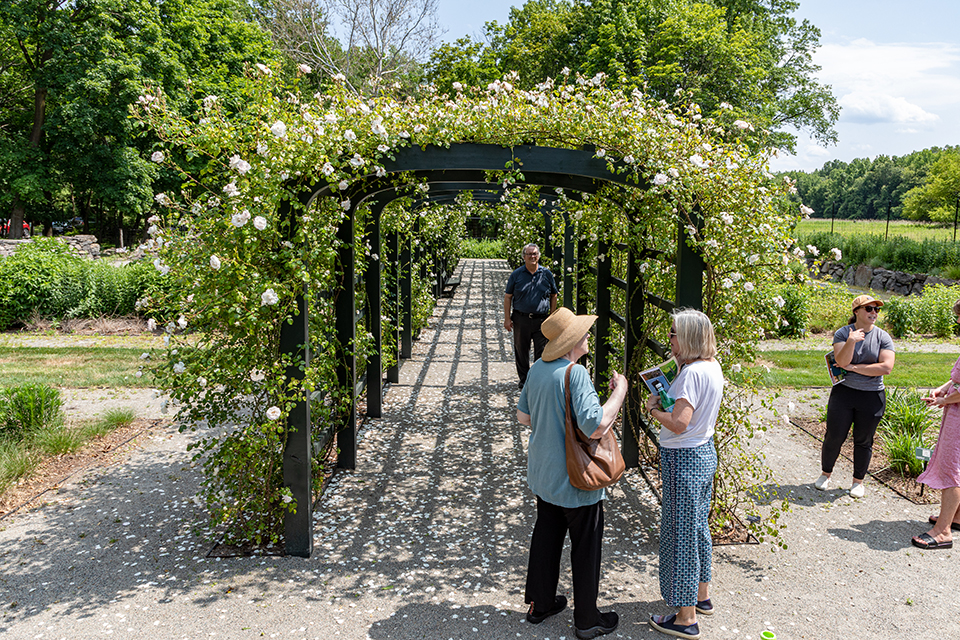
-
The Jay Estate, Rye, NY, 2023. Photo by Barrett Doherty.
